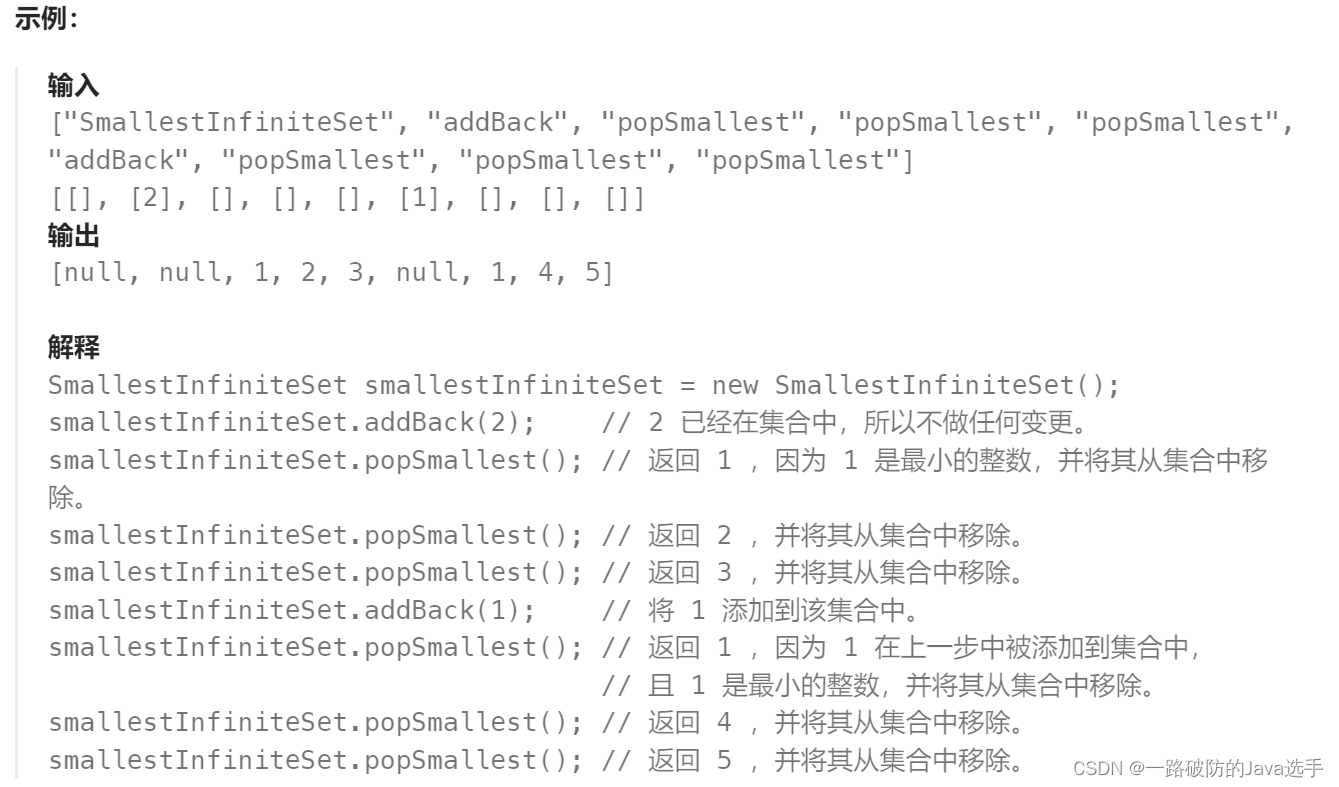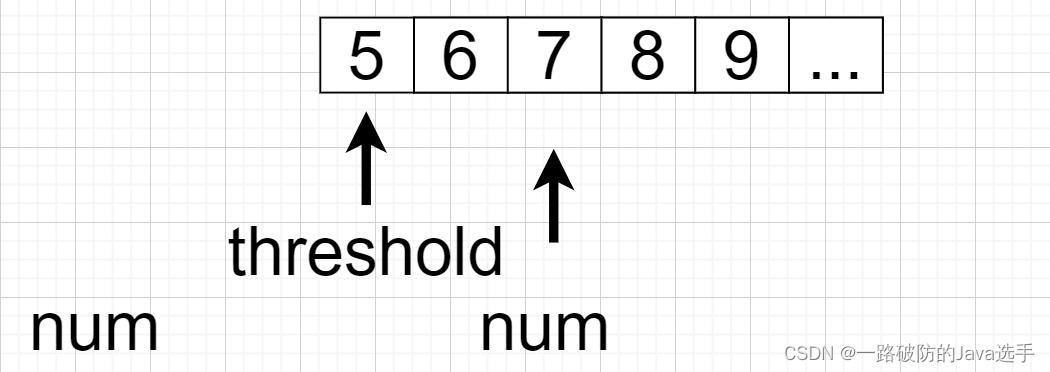目录
[215. 数组中的第K个最大元素](#215. 数组中的第K个最大元素)
215. 数组中的第K个最大元素
题目链接及描述
215. 数组中的第K个最大元素 - 力扣(LeetCode)


题目分析
堆排序分析
题目所述为找到第K个最大元素,首先想到使用Arrays.sort(nums); return nums[nums.length - k]即可解决,此时很好,可以回家等通知了。
第K个最大元素,如果创建一个小顶堆,堆顶元素为最小,并维护堆中元素个数为K,当nums数组遍历结束后,堆顶元素即为返回的元素。
在Java中创建小顶堆以及大顶堆可以使用线程的PrioriityQueue来实现:

Java中的单列集合Collection及其实现类如上,通过上面图示,可以看到PriorityQueue就是Collection的一个实现类,创建代码参考如下:
javaPriorityQueue<Integer> pq = new PriorityQueue<>((a,b)->a - b); //小顶堆 PriorityQueue<Integer> pq = new PriorityQueue<>((a,b)->b - a); //大顶堆
堆排序代码编写
java
public int findKthLargest(int[] nums, int k) {
PriorityQueue<Integer> pq = new PriorityQueue<>((a,b)->a - b);
for(int num : nums){
if(pq.size() < k){
pq.add(num);
}else if(num > pq.peek()){
pq.poll();
pq.add(num);
}
}
return pq.peek();
}这道题目如果在面试中出现的话,可能还是需要手写堆排序的,自己抽时间学习学习手写堆排序随后补充上。
快排分析
快排本质上就是对Arrays.sort(nums)的一种优化手段,具体可以网上查找资源,贴出自己编写的快排代码实现。
快排代码编写
javaclass Solution { public int findKthLargest(int[] nums, int k) { int len = nums.length; // 第1大的元素:len - 1; // 第2大的元素:len - 2; // 第k大的元素:len - k; mySort(nums, 0, len - 1); return nums[len - k]; } public void mySort(int[] nums, int L, int R){ if(L >= R) return; int pivot = nums[L]; int le = L + 1, ge = R; while(true){ while(le <= ge && nums[le] < pivot) ++le; while(le <= ge && nums[ge] > pivot) --ge; if(le >= ge) break; mySwap(nums, le, ge); ++le; --ge; } mySwap(nums, L, ge); mySort(nums, L, ge - 1); mySort(nums, ge + 1, R); } public void mySwap(int[] nums, int idx1, int idx2){ int temp = nums[idx1]; nums[idx1] = nums[idx2]; nums[idx2] = temp; } }
2336、无限集中的最小数字
题目链接及描述
2336. 无限集中的最小数字 - 力扣(LeetCode)


题目分析
初次看到这个题目并没有将其和优先级队列联系起来,题目所述首先存储了所有正整数,随后popSmallest()和addBack()两个方法,对初始化的正整数数组进行操作。
int popSmallest()移除 并返回该无限集中的最小整数。void addBack(int num)如果正整数num不 存在于无限集中,则将一个num添加 到该无限集最后。
首先不可能创建一个数组或者List集合将所有正整数存储起来,想到的是设置一个标志位:如threshold,此值代表的含义为【threshold, +oo)这部分正整数尚未操作过,仍然存在于初始化数组中。【1,threshold)这部分数据已经从初始化数组中弹出。
此时对于addBack(int num)方法调用而言,只需要判断,num 和 threshold的关系,

- 如果num > threshold,说明原集合中已经存在num,无法继续添加。
- 如果num < threshold,说明除初始集合中已经不存在num,需要将其添加至集合中,由于初始使用一个值threshold代表集合,此时可以创建一个小顶堆和哈希表set用于存储num,只有set中不存在num时将num对应的数据分别添加到set和小顶堆中。【哈希表set只是判断元素num知否已经出现过,如果出现过,则不添加,否则添加】
int popSmallest() 移除元素的方法调用此时也分为两种情况即可。
- 如果小顶堆队列不为空,则获取小顶堆堆顶对应的元素,并将其弹出。将set中对应的元素remove()掉,返回堆顶元素即可。
- 如果小顶堆此时为空,直接返回threshold++。即返回了当前对应的元素,同时又将当前对应元素从"集合"中删除。
代码编写
java
class SmallestInfiniteSet {
public int threshold;
public PriorityQueue<Integer> pq;
public Set<Integer> set;
public SmallestInfiniteSet() {
this.threshold = 1;
this.pq = new PriorityQueue<>((a, b)->a - b);
this.set = new HashSet<>();
}
public int popSmallest() {
if(pq.size() > 0){
set.remove(pq.peek());
return pq.poll();
}
return threshold++;
}
public void addBack(int num) {
if(num >= threshold){
return;
}
if(!set.contains(num)){
set.add(num);
pq.add(num);
}
}
}
/**
* Your SmallestInfiniteSet object will be instantiated and called as such:
* SmallestInfiniteSet obj = new SmallestInfiniteSet();
* int param_1 = obj.popSmallest();
* obj.addBack(num);
*/